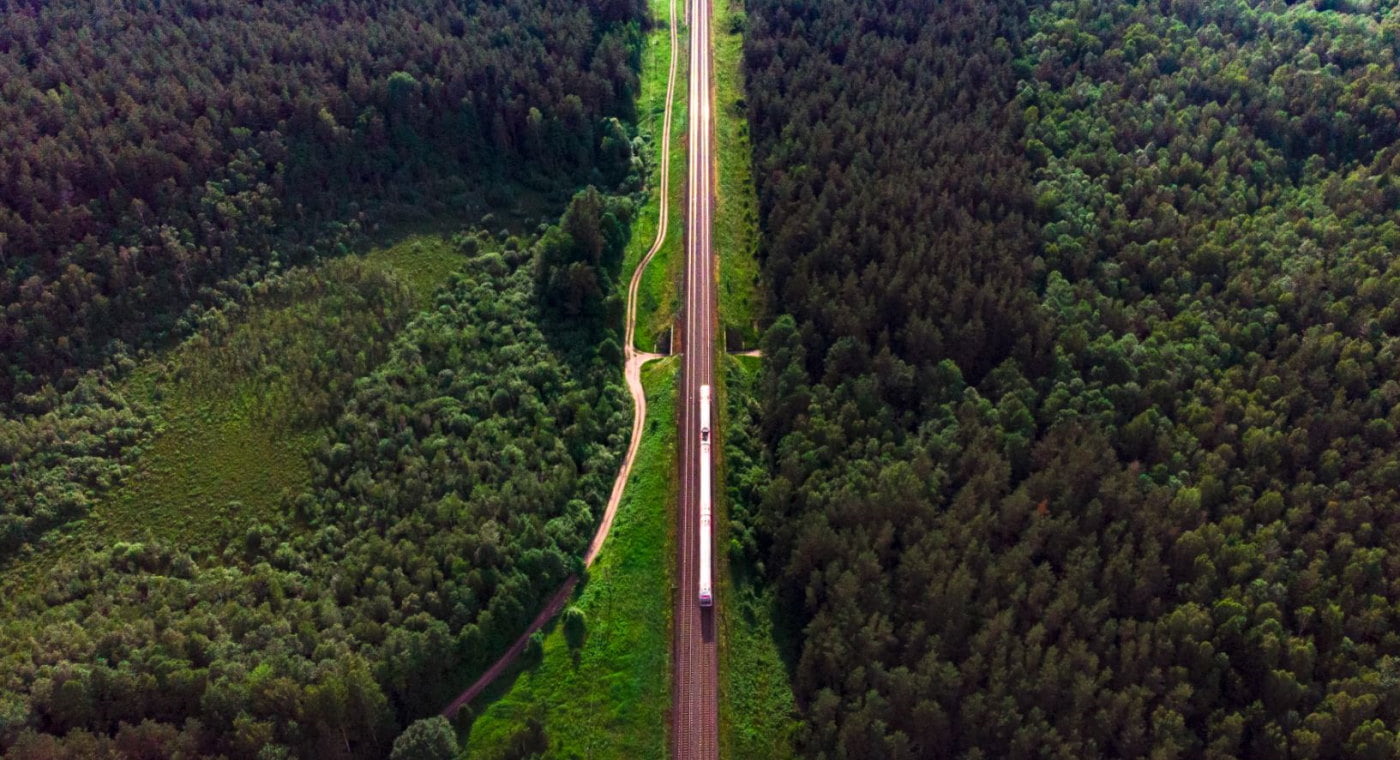Last month, LTG Link, the national rail company in Lithuania put out a press release about some of the steps they are taking both to emphasise the sustainability of travelling by train and encourage more people to use the rail network, and to improve the sustainability of train travel in Lithuania through electrification and new trains.
We decided to take a quick look at what they are doing and also at the state of rail electrification in Estonia and Latvia too.
LTG seems to be getting more serious about sustainability. They are improving their fleet and electrifying more sections of track, both of which we will get to in a minute, the biggest news is that since 2018 all of the electrified train routes in Lithuania are using electricity that is generated from renewable sources. This means that LTG Link electric train journeys have zero greenhouse gas emissions.
The company are also eager to spread the message that rail is the most sustainable way to get around the country and further afield. They have painted three electric trains with bold images of nature to draw attention to their green credentials. These trains have been running since May 6 between Vilnius and Kaunas, Vilnius and Trakai, and Vilnius and Kena. Each of these sections of the network is already fully electrified.
LTG have also set up a new website to educate people on sustainable travel at zalumolink.lt
Linas Baužys, director of LTG, explains "We should not only measure the footprint and waste left behind by the objects that we consume – it is no less important what impact our chosen method of travel has on nature. Paradoxically, when we want to get out of the city, enjoy the surroundings of forests and lakes, we often choose not very environmentally friendly ways of traveling. With this project, we encourage you to think not only of what we can take from the beautiful nature of Lithuania - rest, peace, fresh clean air - but also try to make our escape to its shelter as pollution-free as possible and travel by train.”
Right now railway transport in Europe is responsible for about 7% of passenger and 11% of freight journeys, but only 0.4% of the totally greenhouse gas emissions. It’s also the only method of transport that has consistently reduced its emissions and energy consumption over the last 30 years as it has increasingly transitioned to more renewable energy sources.
On the state of the train system in Lithuania, Baužys continues "We have said that all new trains will be electric. Actually, diesel trains, compared to other vehicles, are still one of the most environmentally friendly ways to travel, but electric trains are natures best friends, because they do not leave any trace of pollution after the trip. We are currently purchasing new trains, some of which will be electric and some electric with batteries. From 2024, we expect that the Vilnius-Klaipėda railway section will be electrified, and these new trains will run on it, so we will reach the seaside by train travelling in a completely green way."
Those trains with batteries that Baužys mentions are a big thing, they will allow the trains to run in areas where the track has not yet been, or can’t be electrified, which allows them to bridge gaps in the infrastructure.
In Estonia, Elron, the national train operator is a few years behind LTG but from early this year they are also powering all of their electrified train lines using only 100% renewably generated power. “The estimated electrical power consumption of electric trains in 2021 is due to exceed fourteen million kWh. While we have been using traditional energy for electric trains over past years, as of this year all of our electric trains are running entirely using renewable energy,” says Merike Saks, Elron’s chairwoman of the board.
While electric trains in Estonia are currently only running in Tallinn and in Harju County, there are plans to electrify the Tallinn-Tartu line, one of the most heavily used in the country, by 2024. Longer term plans include electrifying the line to the east of the country as well.
Like LTG, Elron have also ordered new electric trains to match their improved infrastructure.
"The new trains which have been ordered through a public procurement process, and which should arrive for the Tallinn-Tartu line by the end of 2024, are also dual-system electric trains which will be fuelled by renewable energy," stressed Saks.
When it comes to Latvia, rail operator LDz also talks a lot about sustainability, and has a comprehensive annual sustainability report published on their website, at least up to 2019, but things are not quite so bright as they might be.
Currently only around 14% of the rail lines in the country are electrified. In 2019, after years of planning and delays, LDz had committed to a €441 million project to electrify much of Latvia’s rail infrastructure, but these plans were were shelved in March 2020.
"The planning and development of these projects was carried out at a time when railway infrastructure carried 45 million to 55 million tons of freight a year. Now the situation has changed substantially, and the changes brought about by global trends and the geopolitical situation as concerns freight volume and freight segments means we have to make adjustments in railway infrastructure projects," said Latvian Railway boss Māris Kleinbergs.
Let’s hope that plans to electrify the network can be reinstated when rail freight and passenger volumes increase as Europe opens back up after the Covid pandemic, and that the arrival of Rail Baltica in the coming years will also play a part.
